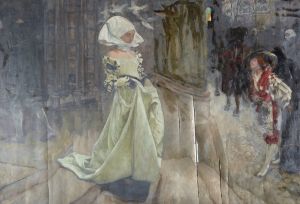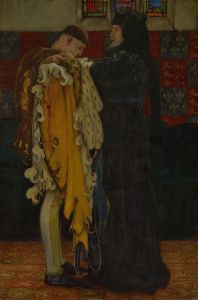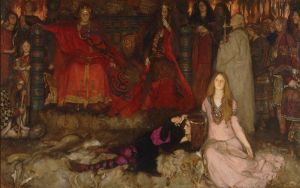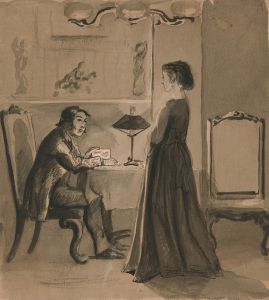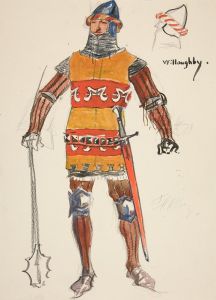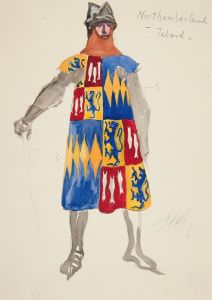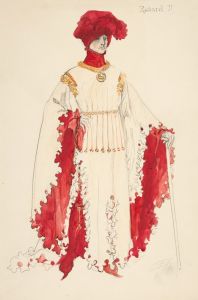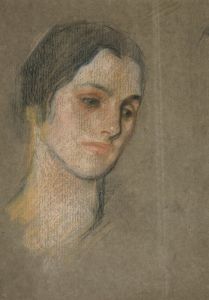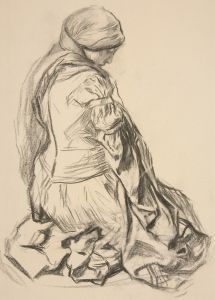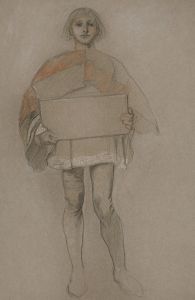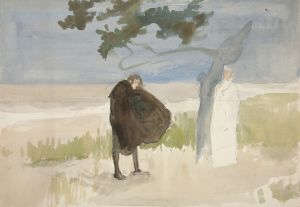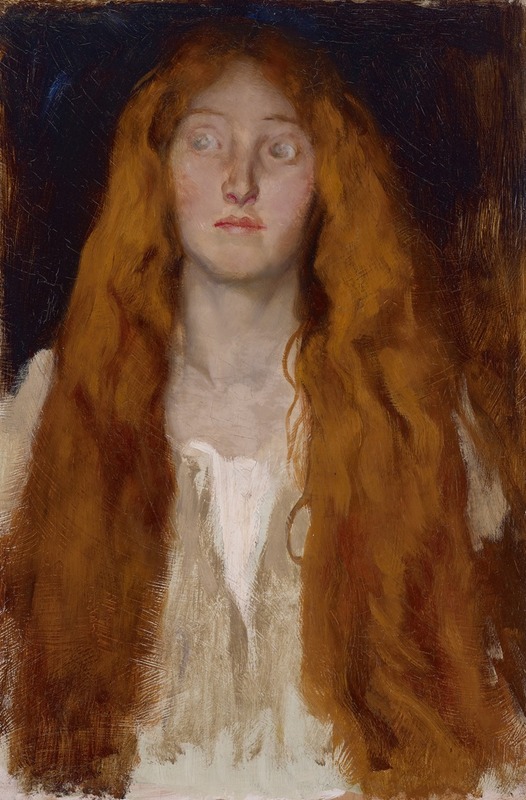
Figure Study of Ophelia, for The Play Scene, Hamlet, Act III, Scene II
A hand-painted replica of Edwin Austin Abbey’s masterpiece Figure Study of Ophelia, for The Play Scene, Hamlet, Act III, Scene II, meticulously crafted by professional artists to capture the true essence of the original. Each piece is created with museum-quality canvas and rare mineral pigments, carefully painted by experienced artists with delicate brushstrokes and rich, layered colors to perfectly recreate the texture of the original artwork. Unlike machine-printed reproductions, this hand-painted version brings the painting to life, infused with the artist’s emotions and skill in every stroke. Whether for personal collection or home decoration, it instantly elevates the artistic atmosphere of any space.
Edwin Austin Abbey's "Figure Study of Ophelia, for The Play Scene, Hamlet, Act III, Scene II" is a preparatory work that showcases Abbey's meticulous approach to capturing the essence of Shakespearean characters. Abbey, an American artist known for his illustrations and paintings, had a profound interest in literary subjects, particularly those of William Shakespeare. This study of Ophelia was part of his broader project to illustrate scenes from Shakespeare's plays, a task that Abbey approached with both scholarly dedication and artistic flair.
The figure study focuses on Ophelia, one of the central characters in Shakespeare's tragedy "Hamlet." Ophelia is a complex character, often depicted as a symbol of innocence and tragic beauty, whose descent into madness and eventual death have been subjects of artistic interpretation for centuries. Abbey's study was intended for a larger work illustrating Act III, Scene II of "Hamlet," commonly known as the play-within-a-play scene. This scene is pivotal in the play, as it is where Hamlet seeks to gauge King Claudius's guilt by observing his reaction to a reenactment of his brother's murder.
Abbey's approach to Ophelia in this study reflects his commitment to historical accuracy and emotional depth. He was known for his extensive research into period costumes and settings, ensuring that his representations were not only artistically compelling but also true to the time and context of the plays. This dedication is evident in the detailed rendering of Ophelia's attire and expression, capturing both her nobility and her vulnerability.
The study likely served as a reference for Abbey's larger compositions, allowing him to experiment with posture, expression, and costume before committing to the final work. Such studies were a common practice among artists of Abbey's time, providing a foundation upon which the final, more elaborate pieces were built. Abbey's work on Shakespearean themes was highly regarded, and his illustrations were featured in various publications, bringing the Bard's characters to life for a wide audience.
Abbey's contributions to art and literature were significant during his lifetime. He was a member of the Royal Academy of Arts and received numerous accolades for his work. His Shakespearean illustrations, in particular, were celebrated for their ability to convey the drama and emotion of the plays. Abbey's Ophelia study is a testament to his skill in capturing the psychological complexity of Shakespeare's characters, a quality that has ensured his work remains appreciated by both art and literature enthusiasts.
In summary, Edwin Austin Abbey's "Figure Study of Ophelia, for The Play Scene, Hamlet, Act III, Scene II" is a reflection of his dedication to the intersection of art and literature. Through careful study and execution, Abbey was able to bring a timeless character to life, contributing to the enduring legacy of Shakespearean art.





